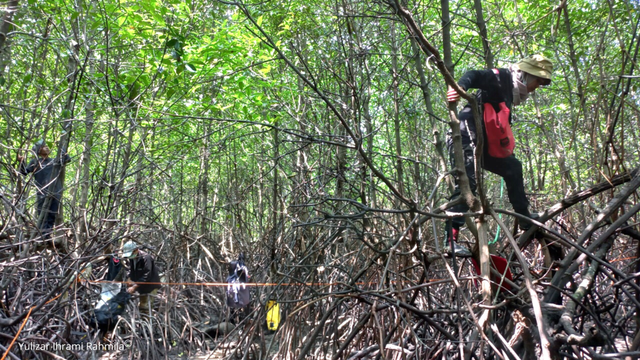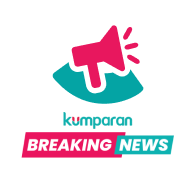Tentang KamiPedoman Media SiberKetentuan & Kebijakan PrivasiPanduan KomunitasPeringkat PenulisCara Menulis di kumparanInformasi Kerja SamaBantuanIklanKarir
2025 © PT Dynamo Media Network
Version 1.100.8
Konten dari Pengguna
New Technology and Restoration of Mangrove Ecosystems
31 Agustus 2022 14:07 WIB
Tulisan dari Yulizar Ihrami Rahmila tidak mewakili pandangan dari redaksi kumparan

ADVERTISEMENT
Mangrove is at the forefront of concern in terms of both economic development and environmental protection, such as carbon stocks in term of climate change, habitat and biodiversity. Indonesia is the largest habitat of mangrove (23%) and center of mangrove biodiversity (67%) of global mangrove species. Many national and international demands related to mangrove rehabilitation arise in response to the need to support economic development in coastal areas; coastal protection; and to mitigate climate change. However, many mangrove Rehabilitation and Restoration practice have been largely unsuccessful. A nationally integrated program for mangrove rehabilitation and management based on robust knowledge (strong research) and technology should be a high-priority component of any strategy to manage and utilize mangroves.
ADVERTISEMENT
Given most mangrove planting was not successful, effective restoration approaches and techniques are crucial to ensure the success of mangrove restoration program. This effective restoration approach and technique meet the growing demand for mangrove restoration which is mainly initiated by local communities, companies via their corporate social responsibility, local and national government, and the international community. For example, the Indonesian government through Peatland and Mangrove Restoration Agency (BRGM) has a target to restore about 600,000 ha of mangrove in nine Provinces across Indonesia.
Improved mangrove nursery is important to provide good quality of mangrove seeds and supply of seedlings (quantity). Mr. Suyadi, Ph.D who is a researcher from the Center for Ecology and Ethnobiology Research, the National Innovation Research Agency succeeded in coming up with an idea for Mangrove restoration technology. Therefore, biotechnology inventions such as vegetative propagation and the use of microorganisms are required to improve mangrove nursery techniques. Compare to generative propagation, vegetative propagation (e.g. cutting and micro-propagation with tissue culture) is superior in terms of mass production and it is not depend on flowering and fruiting season.
ADVERTISEMENT
More importantly, vegetation propagation will increase the accuracy of field trials as the same genotypes can be replicated across sites. With the successful introduction into in vitro culture, considerable experimental screening of mangrove genotypes could also be undertaken as a long-term objective e.g. for salinity and frost tolerance, or insect resistance. Further studies are required to find a good technique and formula of vegetative propagation especially cutting and tissue culture. Another aspect of improved mangrove nursery and mangrove planting is development of bio-stimulant and bioremediation from microorganisms to stimulate mangrove growth and to improve the quality of degraded soil/substrate.
Land preparation is essential for mangrove ecosystem restoration. Some techniques of land preparation such as ecological engineering and embankment (guludan) are available. Bioremediation using an environmentally friendly technique such as microorganisms should be developed to improve degraded land and make it suitable for mangrove growth. Multispecies mangrove planting and natural colonization which were successfully applied in Singapore and USA should be tested in Indonesia. Bio-stimulant and bio-carrier are required to increase propagules or seeds growth and survival. Lastly, maintenance including embroidery of plants after planting and monitoring is essential for mangrove ecosystem restoration.
ADVERTISEMENT
Previous studies mentioned that maintenance and monitoring is an integral part of mangrove restoration not only to ensure mangrove growth but also to evaluate its ecosystem services such carbon stock and ecological functions. Number of mangrove planted is not a relevant indicator for the success of mangrove restoration. It is should base on landscape assessment to measure the increase in mangrove area.
The main objective is to develop knowledge and technologies in the areas of eco-biotechnology; rehabilitation and restoration; early warning system on the status of mangrove ecosystems (mangrove health index) to monitor mangrove restoration; and an integrated management system model and community-based development. This is required for capacity building through knowledge, technology exchange (through training and workshop) and joint research. The result and outputs of the project will be used by central government, local government, international communities, practitioners, and local communities to better manage mangrove and to rehabilitate and restore coastal areas.
ADVERTISEMENT
Writer:
Yulizar Ihrami Rahmila, S.Hut.,M.Ling
Environmental Resource Management Doctoral Program Student of IPB University

